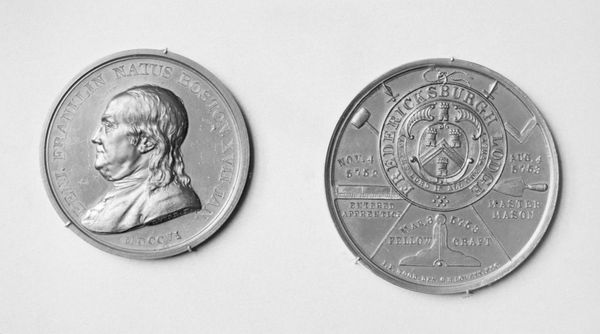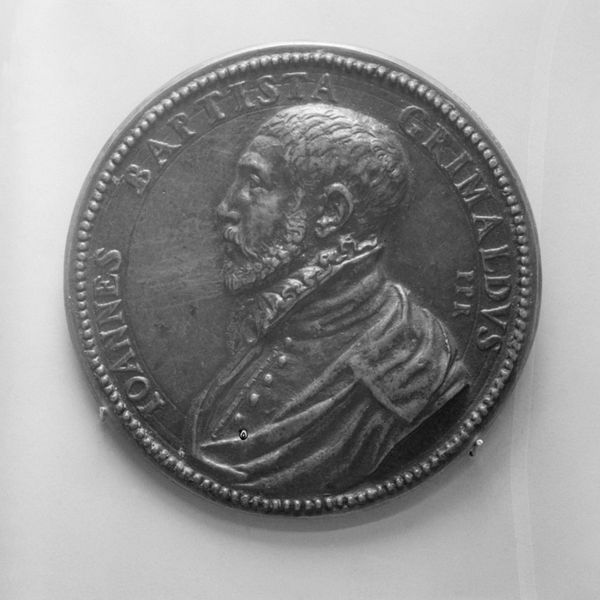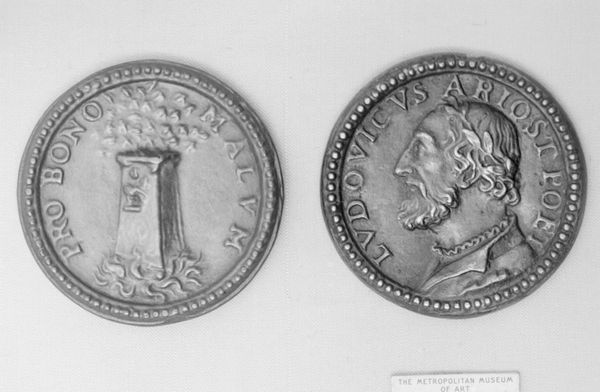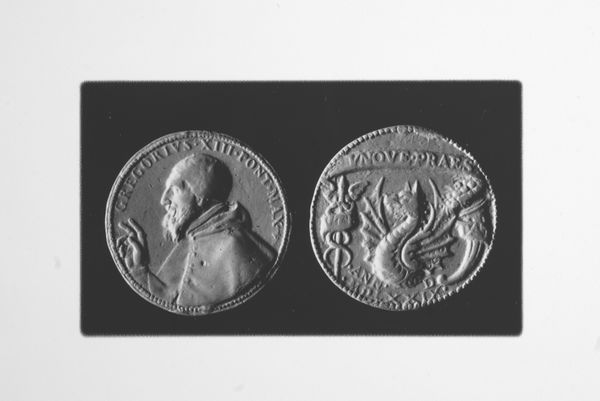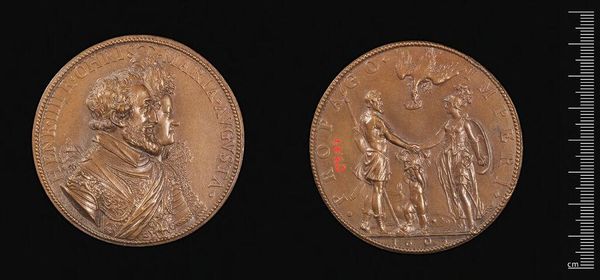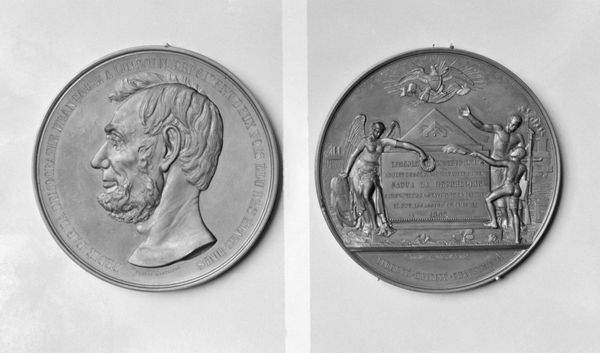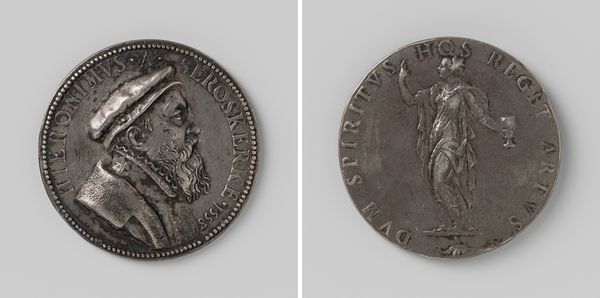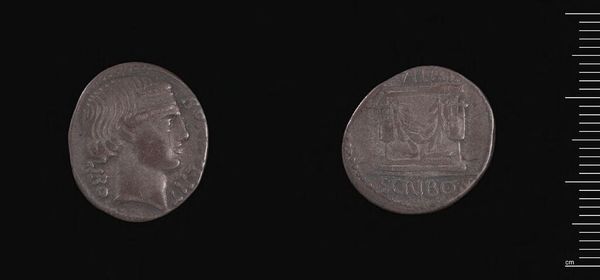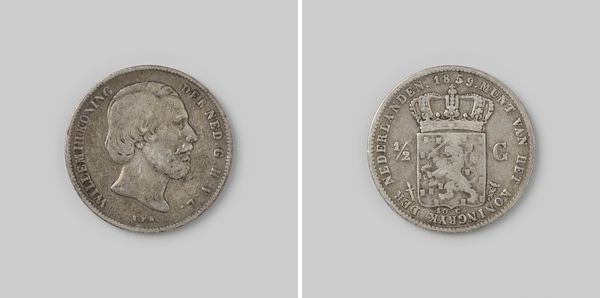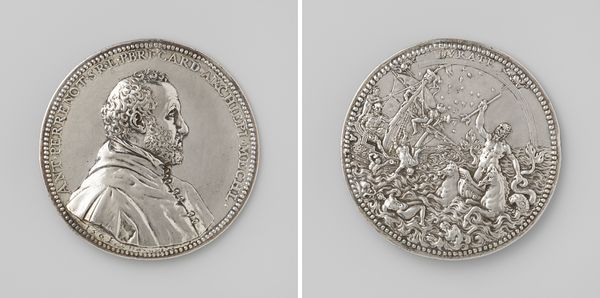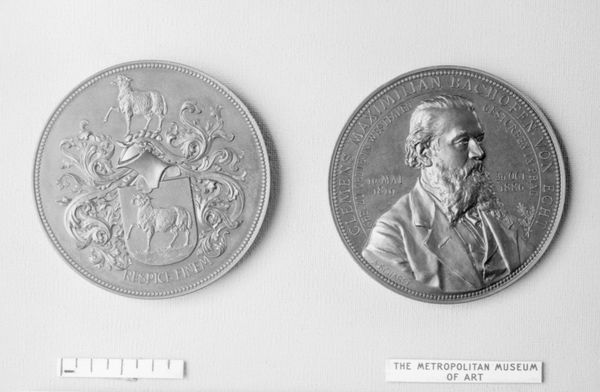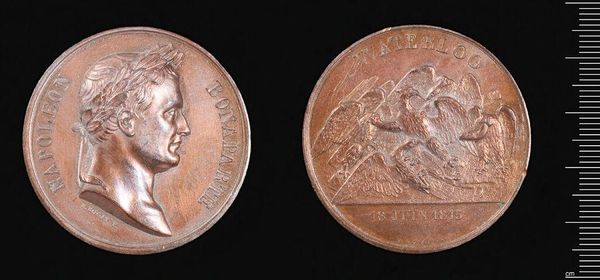
In Honor of Nicholas Keder, the Swedish antiquarian (1695–1735) 18th century
0:00
0:00
metal, relief, sculpture
#
portrait
#
medal
#
decorative element
#
baroque
#
metal
#
sculpture
#
relief
#
sculpture
#
men
#
decorative-art
#
profile
Dimensions: Diameter: 44 mm
Copyright: Public Domain
Editor: These metal reliefs, one of which is "In Honor of Nicholas Keder, the Swedish antiquarian" made in the 18th century by Johann Carl Hedlinger, strike me with their austere formality. They look like coins. What stands out to you about these works? Curator: Considering the materiality, these aren't simply coins for exchange. Medals like these often served as propaganda, tools to disseminate power and solidify social structures. Who gets immortalized in metal, and how, speaks volumes about the era's values. Think about the labor involved – the mining, the smelting, the engraving. Each step reflects social relationships and technological capabilities. Editor: That makes me consider who paid for this production and how widely were they circulated. Do you see any symbolism in their construction? Curator: Absolutely! Look at the detail. The profile portraits, reminiscent of ancient Roman coins, deliberately associate the subjects with power and permanence. Even the choice of metal – its weight, its gleam – conveys a sense of wealth and authority. How do these objects, designed for commemoration, influence our understanding of history itself? Did you also notice the decorative elements on the edge? They provide additional social context about who could afford these types of works. Editor: So, these medals are more than just portraits; they're products of a complex system of labor, material value, and social power. They help create legacy. Thanks for showing me what to consider. Curator: Precisely. By examining the medal's production, circulation, and reception, we gain a deeper understanding of 18th-century society and its values. And notice, art history can show how these processes persist today.
Comments
No comments
Be the first to comment and join the conversation on the ultimate creative platform.
